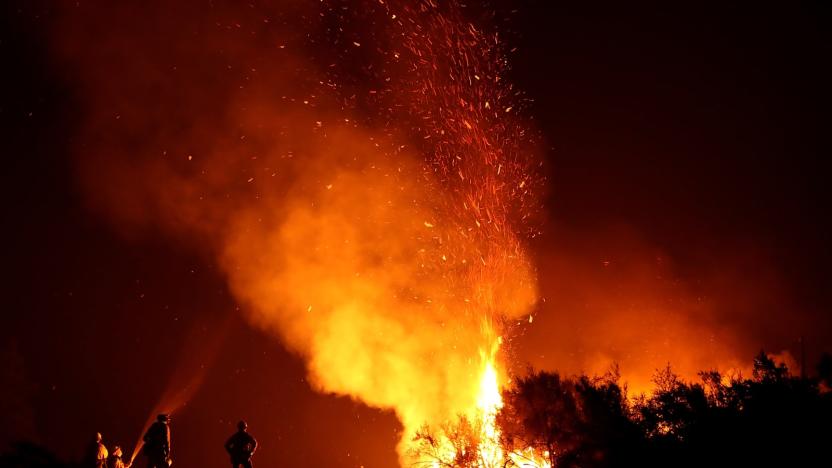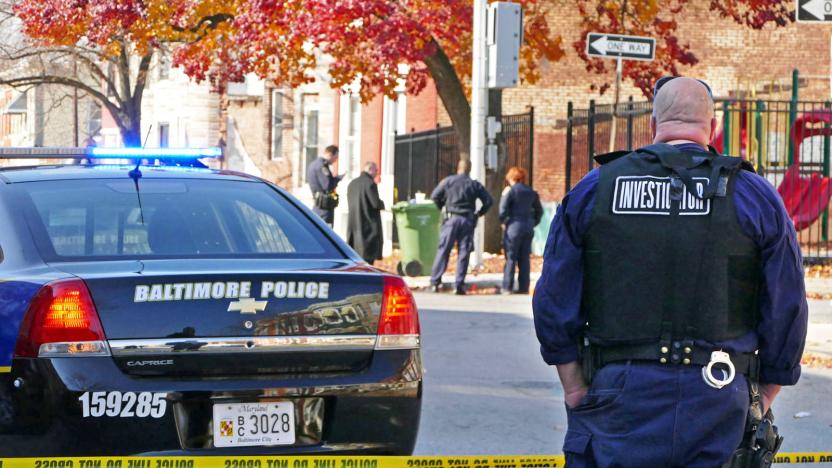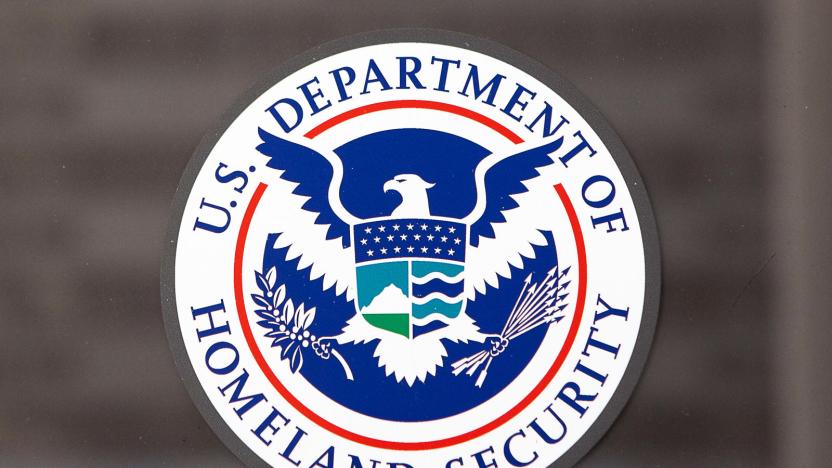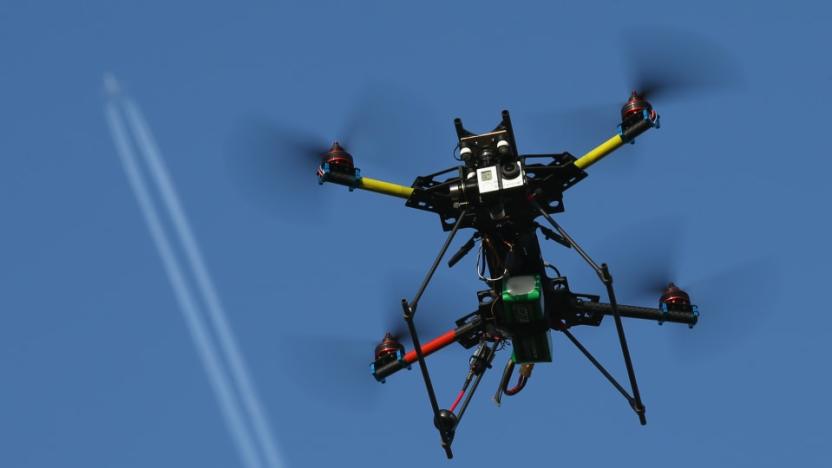EmergencyResponse
Latest

Verizon lifts data speed caps for wildfire responders amid backlash
Earlier this week, Verizon came under fire for throttling a fire department's unlimited data while it was responding to the massive Mendocino Complex Fire that's ravaging California. The department was ultimately pushed into a more expensive plan in order to avoid speed caps. After the incident came to light and stoked widespread criticism of the company, Verizon said in a statement that its response was a "customer support mistake" and that it often lifts speed restrictions for emergency responders. Today in a new statement, Verizon added that it has now lifted speed cap restrictions for first responders on the West Coast and in Hawaii and is set to introduce a new plan for these types of responders soon.

Baltimore’s 911 dispatch system was hacked last weekend
Baltimore's 911 dispatch system was hacked over the weekend and authorities temporarily shut it down. The mayor's office confirmed to The Baltimore Sun that the system was digitally infiltrated early Saturday morning, but provided no other details while the investigation is ongoing.

DHS finds first responder apps are plagued by security issues
While it's great that a consumer app like Waze started offering traffic data to help first responders avoid traffic, emergency professionals have been using their own suite of apps for awhile. But how safe are they? The Department of Homeland Security initiated a pilot program to vet the security of 33 different apps provided by 20 developers -- and found that 32 of them had potential security and privacy concerns and more serious vulnerabilities.

California bill allows firefighters to ground pesky drones
As wildfires scorched sections of California Interstate I-15 last week, firefighters found themselves hamstrung and unable to deliver aerial water coverage for nearly 20 minutes because a couple of schmucks were flying their quadcopters directly overhead. In response, Assemblyman Mike Gatto (D-Glendale) and Senator Ted Gaines (R-El Dorado) have introduced Senate Bill 168. The bill would grant "immunity to any emergency responder who damages an unmanned aircraft in the course of firefighting, air ambulance, or search-and-rescue operations." The bill will also levy stiff fines and potentially even jail time for people whose UAVs inhibit an emergency response.

Japan considers using social networks in disaster situations
Emergency services are embracing technology as new ways to investigate, send alerts and receive reports of crises. And now, the Japanese are looking at social networks to support communication in disaster scenarios, especially when traditional services fail. The local Fire and Disaster Management Agency put together a panel discussion on just that topic, with representatives attending from the likes of Twitter, Yahoo, Mixi and NHN Japan, as well as various government and emergency bodies. The talk was motivated, in part, by the March tsunami, when the internet was the sole means of information for some, and with initiatives like Google's Person Finder playing a role in the aftermath. Any formal implementation of the ideas discussed is probably a long way off, and this is the first of three planned meets to hash it out. In the meantime, however, Twitter's Japanese blog posted some suggestions on how their network could be used in emergencies -- we just hope they won't be needed anytime soon.

PlayBook Mobile Responder app puts police tools in a finger-friendly package
The PlayBook may not have taken off in the consumer market, but its enterprise-friendly features may help it find a home elsewhere -- especially now that it's packing a speedy 4G radio. Fresh on the heels of the LTE edition hitting Canadian shores, Intergraph has unveiled its Mobile Responder app that turns RIM's slate into a formidable tool for police and other emergency responders. The app taps into the company's Computer Aided Dispatch system, which pulls in data from police databases, keeps dispatch centers just a tap away and allows the immediate filing of incident reports. The suite is getting its first public demo next week at the Canadian Association of Chiefs of Police Conference in Nova Scotia. For more, check out the PR after the break.

FCC rules VoIP providers must report outages in effort to improve 911 service
The FCC has many important things under its jurisdiction, and ensuring a functional 911 service is among the most critical. As such, telephony providers are required to report network outages, so the commission can monitor and maintain a resilient service. Until now, this hasn't included VoIP services, but a new ruling states that interconnected VoIP providers will have to declare outages that meet certain criteria. The move comes after the FCC's most recent Local Competition Report, which reveals that almost one-third of the 87 million residential telephone subscriptions are now provided as VoIP, and therefore carry emergency calls. While public safety is the main driver, the report also states it will "ensure critical communications infrastructure remains available in times of crisis." Check out the lengthy video after the break to see the meeting in its entirety.

Verizon Wireless gives birth to first LTE COW in Florida, we're still waiting for a celebratory cigar
They're not keen on providing milk, and we've never found evidence to suggest that Verizon's COWs are indeed happy COWs, but Big Red has welcomed a new arrival to its family: the company's first LTE-equipped cell-on-wheels. Measuring in at 1,080 inches tall and weighing a stunning 24,000 pounds, the self-powered transmitter will begin rolling across Florida to handle demand spikes during major events and to serve as a backup communications solution for emergency response scenarios. Although just an infant, it's capable of handling hundreds of simultaneous calls and data transmissions. Spoken like a thrilled papa, Verizon gushed, "We're very proud of this new baby, and glowing about our 4G LTE services around the state." You'll find all the carrier's cheers in the PR after the break.

Microsoft Surface-controlled robots to boldly go where rescuers have gone before (video)
Ready to get hands-on in the danger zone -- from afar? That's precisely what an enterprising team of University of Massachusetts Lowell researchers are working to achieve with a little Redmond-supplied assistance. The Robotics Lab project, dubbed the Dynamically Resizing Ergonomic and Multi-touch (DREAM) Controller, makes use of Microsoft's Surface and Robotics Developer Studio to deploy and coordinate gesture-controlled search-and-rescue bots for potentially hazardous emergency response situations. Developed by Prof. Holly Yanco and Mark Micire, the tech's Natural User Interface maps a virtual joystick to a user's fingertips, delegating movement control to one hand and vision to the other -- much like an Xbox controller. The project's been under development for some time, having already aided rescue efforts during Hurricane Katrina, and with future refinements, could sufficiently lower the element of risk for first responders. Head past the break for a video demonstration of this life-saving research.

AT&T's new cell tower can fit in a suitcase, help restore networks after natural disasters
Whenever a natural disaster strikes, phone companies are typically forced to patch up their own networks with fleets of trucks that serve as temporary cell towers. It's a process that involves plenty of manpower and, most importantly, plenty of time. AT&T has a more portable solution: a cell tower small enough to fit into a suitcase. The company's new Remote Mobility Zone is comprised of an antenna and accompanying satellite dish, both of which can handle up to 14 simultaneous calls placed within a half-mile radius. Any AT&T phone can connect to the makeshift system, which will sell for anywhere between $15,000 and $45,000 (plus some monthly fees), though emergency workers will need a generator to get it up and running. They'll also have to live without 3G data, which sounds like a reasonable compromise to us.








